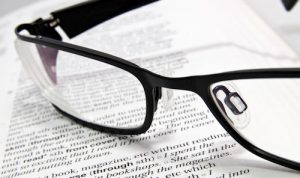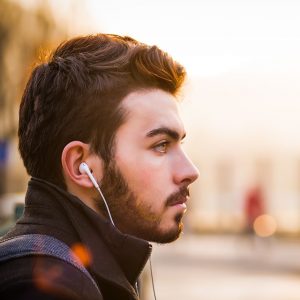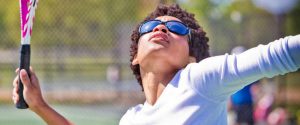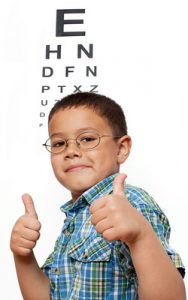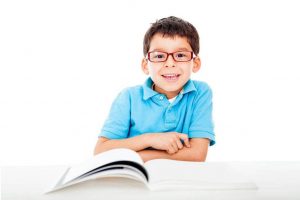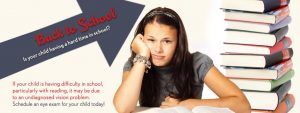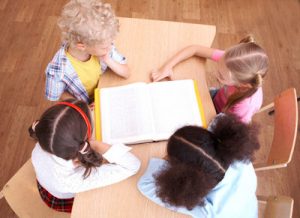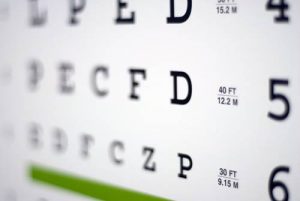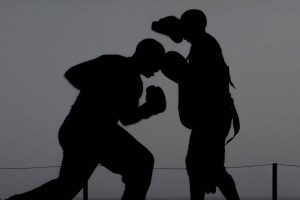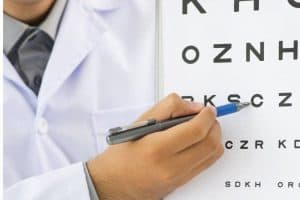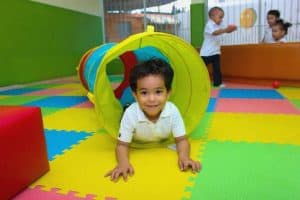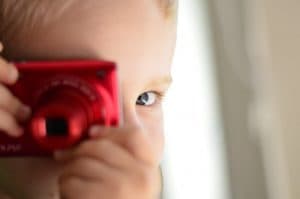2021 Update: Reading Comprehension
Since 80 percent of learning is through vision, if a child has a visual problem it will affect their reading comprehension. The first step in
Read MoreBlurry Vision and Headaches
Did you know that headaches and blurred vision could indicate you have a undiagnosed eye condition? When blurred vision and a headache are experienced at the same time it can be frightening, especially the first time it happens. Blurred vision can affect one or both eyes. It can cause vision to be cloudy, dim, or even peppered with shapes and colors, making it difficult to see.
Read MoreWhat is Visual Information Processing?
Have you been told your child has difficulties with their Visual Information Processing? How can optometrists help? Visual processing describes the way the brain processes
Read MoreWhat is Reading Fluency?
Is your child’s reading below grade level? If so, it could be a reading fluency problem. If a child has some kind of visual dysfunction,
Read MoreVisual Motor Integration
Does your child have difficulty with hand-eye coordination or playing sports? It could be a visual motor integration problem When a child incorrectly perceives the
Read MoreVisual Form Constancy
Does your child still reverse letters, numbers or words? It could be a visual form constancy problem. Form constancy is necessary to understand that
Read MoreVisual Figure Ground
Does your child struggle with copying words from the board? Or have difficulty finding important words in a text? It could be a visual figure-ground
Read MoreVisual Closure
Does your child struggle with reading? Or have difficulty completing a puzzle? It could be a visual closure problem. The ability to quickly view parts
Read MoreVisual Memory
Does your child struggle with spelling or have comprehension difficulties? It could be a visual memory problem. The ability to remember what we see is
Read More2021 Update: Vision Therapy for Eye Tracking
Over 30% of those diagnosed as having dyslexia have an eye tracking deficit. When a child has a visual processing or perceptual disorder it hinders
Read MoreHow does Visual Efficiency affect Learning?
Over 15% of the population suffer with visual efficiency problems – impacting their academic results and workplace performance. Visual efficiency is understood by measuring how
Read More2021 Update: Published Studies in Vision Therapy
Evidence-based medicine integrates academic research with clinical trials — making it the gold standard of published research. Are looking for published research on VT? Provided
Read More2021 Update: Writing and Spelling
Your child’s vision might be clear, but do they also have clear handwriting and accurate spelling? Vision is not just ‘20/20 sight’ but is also
Read More2021 Update: Parent’s Checklist for Vision Therapy
Does your child struggle in school and you’re not sure why? Up to 25 in every 100 children are affected by vision problems — that’s
Read More2021 Update: Vision Therapy for Learning
Research shows 25 percent of children have a significant vision problem that impacts their learning, according to the American Optometric Association (AOA). Up to 80 percent of all learning comes through the visual pathways. There are 17 visual skills that are necessary to perform at school and the office, these are all critical for learning.
Read More2021 Update: Vision Therapy for Visual Efficiency
Reduced visual efficiency can greatly reduce a student’s ability to learn or be an adult’s office productivity. Reduced visual efficiency can negatively impact a person’s
Read More2021 Update: Treatments for BVD
Up to 20% of the world’s population suffers from Binocular Vision Dysfunction (BVD). What is BVD? Binocular Vision Dysfunction (BVD) is caused by the two
Read More2021 Update: Lazy Eye and Adults
Lazy eye is estimated to affect up to 5% of all adults. For many decades, it has been thought that only children under the age
Read More2021 Update: Vision Therapy for Adults
Vision therapy can be more effective for adult patients, as they are typically more motivated in therapy.
Once an adult starts to notice the results of vision therapy with their own eyes they realize how beneficial it can be for them, motivating them to improve even further.
2021 Update: Reading Fluency
80 percent of classroom learning is visual, meaning that any problems in the visual system can impact a child’s reading fluency. If a child has
Read More2021 Update: BVD and Dyslexia
Studies show that up to 15% of the population may be dyslexic, though less than 10 percent actually receive a formal diagnosis. Dyslexia is a complex condition that impacts the way the brain interprets and processes information. It is one of the most common learning disabilities that affects writing, spelling and reading.
Read More2021 Update: BVD and Anxiety
According to the American Psychiatric Association, as many as 30% of the adult population experience anxiety at some point during their lifetime. Anxiety is the most common of all mental disorders. It can cause feelings of near-constant fear, panic, and worry. Feeling anxious and overwhelmed can come from being unsure of your surroundings and often prevents sufferers from living a normal life.
Read More2021 Update: BVD and Headaches
More than 14% of adults in the U.S. complain of severe headaches or migraines. A headache is described as an achy pressure in the forehead, temples and even the upper part of the neck. A migraine is a severe headache that generally causes more debilitating symptoms. Migraines can cause nausea and make it difficult to speak and think clearly.
Read MoreVision and Autism: Part 2
Author: Randy Schulman, MS, OD, FCOVD As vision is key to so many other systems, vision intervention, such as vision therapy, can have a profound
Read MoreNearsighted or Farsighted?
Have you been told you are ‘nearsighted’ or ‘farsighted’ but not totally sure what they mean? Both of these may require you to rely on
Read MoreWhat Are Visual Efficiency Problems?
Poor visual efficiency skills can negatively impact performance in school, at the office, and on the sports field. Understanding and knowing what to look out for can help with early detection and treatment of visual problems – leading to improved school grades and sports achievements.
Read MoreVision Therapy for Concussions
Up to 90% of people experience vision problems after experiencing a concussion. The symptoms that persist following a concussion are collectively called Post Trauma Vision
Read MoreMyopia and Vision Therapy
Vision therapy not only treats lazy eye, eye turn, or learning difficulties, but may also prevent or slow the progression of myopia. While a cure
Read MoreIs Binocular Vision Important for Sports?
Binocular vision is important for athletes, as it impacts their performance. An athlete can improve their visual skills and boost their performance on the field with the help of sports vision training. Binocular vision is the eyes’ ability to focus on an object to create a single image, this is critical for achieving on the sports field.
Read MoreBuilding Self Esteem
Too many children are labelled as lazy learners, poor students, learning difficulty and even dyslexia and ADHD, when it could be an undiagnosed vision problem.
Read MoreWhich Eye Conditions Can Affect Learning?
According to the College of Optometrists In Vision Development (COVD), 25% of all children have an undiagnosed vision problem impacting their school grades. If your
Read MoreCould a Child with ‘20/20 Sight’ Have a Vision Problem?
Studies have found that 1 out of 4 school children suffer from a vision problem that impacts their learning. If your child has 20/20 vision,
Read MoreDoes Your Child Have a Learning Difficulty?
Is your child not reaching their potential at school? Up to 80 percent of all learning comes through the eyes and visual pathways. Strong visual skills are critical for all aspects of learning. If there are problems with your child’s visual skills it could impact their ability to learn.
Read MoreCould Eye Strain Impact your Work Performance?
Do you feel your work performance is impacted by tiredness, headaches or eye strain?
Vision therapy may just be the solution you have been searching for.
Vision therapy is an effective customized program that can deliver clearer and more comfortable vision. Vision therapy has been clinically proven to be effective for adults too.
Does Dyslexia Impact your Work Performance?
Dyslexia affects around 15% of Americans, impacting the lives and work performance of millions of adults. Dyslexia is a learning disability that affects the way
Read MoreAre Your Child’s Grades a True Reflection of their Potential?
Is your child struggling in school? They may have a vision condition that is affecting their ability to achieve academic success. When school becomes difficult
Read MoreWhat are Retained Primitive Reflexes?
Primitive reflexes are essential for development of your baby’s brain. However, if these are ‘retained’ there could be consequences for your child. The foundation of
Read MoreChildren and BVD
Did you know children can also suffer from Binocular Vision Dysfunction (BVD)? In fact, BVD affects children almost 10 times more often than all children’s ocular diseases combined! Up to 25% of children have binocular vision problems affecting the function of their eyes.
Read MoreFeeling Anxious? You May Have a Vision Problem
Anxiety disorders affect millions of people each year. But did you know that certain vision problems can actually trigger anxious thoughts and feelings? Binocular vision
Read MoreLazy Eye Success
Author: Dr. Randy Schulman EyeCare Associates, CT “Vision therapy has helped me ride my bike, and helps me for school in math, writing, and reading. I
Read MoreLazy Eyes Need Binocular Vision Therapy
Vision therapy has been shown to be the most effective solution for lazy eye, as it treats the underlying cause of the condition. A lazy
Read More“Lazy Eyes” Are Not Lazy
If a lazy eye is not really ‘lazy’, then what is it exactly? Lazy eye (amblyopia) is the most common neuro-developmental vision condition, affecting up
Read MoreStanford University: Concussions and Oculo-Motor Dysfunction
This month, a presentation was given by Dr. Jamshid Ghajar, MD, PhD, FACS at the Stanford Brain Performance Center (Department of Neurosurgery and Stanford Athletics),
Read MoreVision Therapy Builds Confidence
If your child has been struggling in school, they may also be struggling with their confidence and self esteem. Many children who suffer from reduced
Read MoreHow Do Reading Glasses Help Children?
Has your optometrist prescribed reading glasses for your child? When people think of reading glasses, they generally think of older adults with presbyopia. Reading glasses for children, typically referred to as ‘low plus’ lenses, are not prescribed for the same reason as they are for adults, but rather to support the focusing skills necessary for near vision activities.
Read MoreThe Larry Fitzgerald Story
Have you heard of NFL star Arizona Cardinals wide receiver, Larry Fitzgerald?
He is the second most career leading receiver for total TDs, yards, catches and more, after the legendary Jerry Rice. Larry credits his success on the field to a customized vision therapy program.
Vision Therapy or Orthoptic Therapy?
Vision therapy and orthoptic therapy are sometimes confused with one another. The information on this page includes everything you need to know about what makes
Read MoreVision for Rock Climbing
Rock climbing is a sport that requires physical strength, endurance, and balance … and visual skills Did you know that to be a successful climber,
Read MoreHelp! My Child Dislikes Online Learning
The current COVID-19 pandemic has children learning through digital platforms for up to 7-10 hours a day! But what can you do when your child
Read MoreAre You Suffering From Post-Concussion Symptoms?
Up to 90 percent of people experience post-concussion symptoms for many years… until they receive effective treatment from a neuro-optometrist. Post traumatic vision syndrome (PTVS)
Read MoreNear Point Visual Stress (NPVS)
Modern science now understands why long hours of reading and screen time can lead to eye strain. When the visual system struggles to meet the
Read MoreWhat Is Neuroplasticity?
Neuroplasticity refers to the brain’s ability to change and adapt in response to new experiences. It was once thought that the nerve fibers in the
Read MoreEye Conditions That Can Affect Academic Success
Is your child struggling to keep up with their classmates? A vision condition may be affecting their ability to achieve academic success. The following eye
Read MoreHow to Help Your Students Succeed
According to the American Optometric Association (AOA), 25 percent of all children have a vision problem significant enough to impact their learning. Up to 80
Read MoreThe Do’s and Don’ts of Vision Therapy
Has your optometrist recommended a program of vision therapy? Vision therapy is an effective program designed to treat a variety of vision conditions that cannot
Read MoreHow Does Vision Therapy Boost Self Confidence?
Could improving your child’s school grades also improve their motivation and self confidence? Many children who suffer from reduced visual skills are not identified and end up struggling through school and even on the sports field – often being mislabeled as clumsy, lazy, or learning disabled and even misdiagnosed with ADHD. These negative stigmas can significantly impact a child’s self esteem and confidence, both inside and outside the classroom.
Read MoreHow to Improve Your Child’s Reading Skills
If your child struggles to read, they may have an undetected visual problem. Reading fluency and comprehension is dependent on the strength of the visual skills – specifically, binocular vision, saccades, accommodation, visual fixation, and convergence. A deficiency in any of these visual skills can result in reading difficulties, which can consequently impact a child’s ability to learn.
Read MoreUnderstanding Convergence Insufficiency
Convergence insufficiency (CI) affects up to 15 percent of all school-age children. Convergence insufficiency is a binocular vision condition that affects near vision and eye
Read MoreDo Vision Screenings Assess Functional Vision?
Most vision screenings conducted at schools measure visual acuity, or how well you can see, but unfortunately, do not assess other important aspects of a
Read More5 Tips to Improve Your Game
Whether you’re trying out for a high school sports team, training for a 5K marathon, or competing in a friendly softball league, practice these 5
Read MoreVisual Rehabilitation FAQs
These are the 10 most frequent questions asked to vision therapy eye doctors on vision therapy following a head injury. You may easily find answers to your questions below. If you still have questions, contact your nearest eye doctor experienced in TBIs, concussion and vision therapy
Read MoreVision for Motorsports
Drivers in all motorsports are constantly seeking a competitive edge – improved visual skills may be the solution. Whether your passion is MotoGP or NASCAR,
Read MoreVision for Boxing
To thrive in the ring, your boxing skills are are as vital as your visual skills. Clear vision is important for a boxer, but having
Read MoreGuide to Dry Eye
Do suffer with dry eyes? There are a range of very successful treatment now available that can offer you significant relief from your symptoms. The key is receiving the right diagnosis and appropriate advice from your eye doctor.
Read MoreEyecare for Children
Eyecare for Children Are you worried about your child needing glasses? Do you want to understand why your child needs bifocals or multifocals? Are you
Read MoreVision Therapy for ADD
Vision Therapy for ADHD Has your child been diagnosed with ADHD, but continues to suffer from reading and attention issues? Does your have eye tracking
Read MoreVision Therapy for Children
Are your child’s school grades not a true reflection of their potential? Has your child been told they have a learning or attention difficulties?
The problem could be with their eyes or visual skills and vision therapy might the solution you have been looking for.
Are School Vision Screenings Reliable?
Many schools conduct vision screenings as a service to try to identify vision problems, but are they reliable? The simple answer is, no. These vision screenings are very limited, and are not a substitute for a comprehensive eye examination performed by an eye doctor.
Read MoreEssential Vision Skills for College Students
Strong visual skills are essential for academic success in college
College students have significantly high demands on their visual systems— and the integrity of their visual skills are critical for their success in their studies. Colleges and universities are known for their large lecture halls and seemingly endless amount of requirements. The great amount of studies that are involved in fulfilling these requirements lead to many hours of reading textbooks, studying, and using computers – all requiring excellent visual skills.
Read MoreVision Problems from a Brain Injury
Can a brain injury cause vision problems? Yes, any traumatic brain injury (TBI) can have significant visual consequences. During the initial treatment of a concussion or other traumatic brain injury (TBI), visual problems are often overlooked. Frequently, visual problems are hidden or neglected— lengthening and impacting rehabilitation.
Read MoreWhat Is Lazy Eye?
According to research, amblyopia affects up to 1 in 33 of the population— this means up to 10 million people in the U.S. may have a lazy eye. Amblyopia, commonly known as a “lazy eye”, is a neuro-developmental vision condition that begins in early childhood and develops when one eye is unable to achieve normal visual acuity, causing blurry vision in the affected eye, even with corrective eyewear. The condition also commonly presents with poor depth perception, and reading difficulties.
Read More











